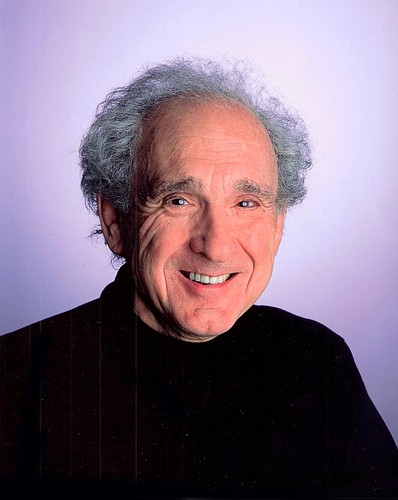- November 23, 2024
-
-
Loading

Loading

If you’re looking for a Renaissance man, look no further than Jerry Bilik.
He’s a musician, an arranger, a conductor, an orchestrator and the composer of 50 original musical works, as well as a noted stage director and producer.
All of those pyrotechnic musical and theatrical talents come together in one composition: “Independence.” Bilik’s joyful celebration of America’s birthday will make its local debut at Choral Artists of Sarasota’s “Sounds of Independence” concert July 4. Sarasota Concert Band and poet Cedric Hameed will join forces with the vocalists to perform this soaring masterpiece. We gain insight into the multitalented mind behind it.
I composed the piece for spoken voice, full chorus and instruments. It tells the story in music of the events leading up to the creation of the Declaration of Independence. It offers a real look into how things transpired, both here and back in England. That chain of events ultimately led to that fateful moment on the village green in Concord, Mass., which in turn led to the creation of our country.
I was originally commissioned to compose the piece for the United States bicentennial celebration in 1976.
Every word spoken and sung by the chorus is quoted directly from the Declaration of Independence. Cedric Hameed will narrate the actual words of King George III and members of the British Parliament. His text is entirely drawn from my research of the official parliamentary records from that time. I’m hoping he has a great British accent!
Sarasota Orchestra performed my “Symphony in M-L,” and La Musica International Chamber Music Festival performed my string quartet and piano quintet.
Sibling rivalry. As a child, I’d play by ear at the piano and slowly taught myself to read music. My older brother used to challenge me to a game of “Name that Tune.” The winner got the loser’s dessert; the loser had to do one of the winner’s chores. I always lost because my repertoire was limited to a few simple songs, and my brother could always figure out what I was playing. I eventually started making things up to try to trick him. I’d disguise a familiar song so he couldn’t tell what I was playing. I’d throw him off by mixing up the chords and hiding the melody. And it worked — I actually started winning. After that, I kept figuring out new ways to play around with notes and chords. I was actually absorbing the techniques of arranging and composing — and that’s what set me on the track to becoming a composer.
Not really. (Bilik laughs.) But they were highly supportive of my musical creativity — despite the sour notes when I first started playing on my own. I developed very slowly, but they were very patient.
Yes, and I didn’t wait long. My studies began at the National Music Camp in Interlochen, Mich., at the age of 13. After that, I studied under an excellent teacher: Tibor Serly, who’d been a pupil of [Béla] Bartók. I later continued my studies at the University of Michigan in Ann Arbor.
Well, for me, that was the whole point of studying. But the answer is “yes.” In the years I served in the United States Army, I was playing professionally on piano, bass and trombone, while also composing and arranging on a professional level. The University of Michigan School of Music also invited me to join their faculty. I accepted the invitation and taught music theory and arranging there for several years before finally moving to Hollywood.
It’s true.
A high school friend was a successful TV producer and director in L.A. He suggested that I leave teaching and try my hand in Hollywood. My first effort was writing background music for “Charlie’s Angels,” and one thing led to another.
I was vice president for creative development at Feld Entertainment. We worked on creative elements for the circus and several shows in Las Vegas, including the magicians Siegfried and Roy. For 30 years, I wrote and directed all of the Disney On Ice and Disney Live shows. Creatively, the sky was the limit. I had a great time.
The circus! We’d do a TV special in Sarasota every year, and I really fell in love with the city. I knew this was the place to be when I finally retired.